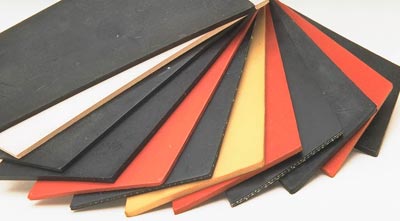TIRE AND RUBBER INDUSTRY
Rubber is an unsaturated organic compound made of carbon and hydrogen. Natural rubber is collected from wild plants or plants cultivated on plantations. It is made from a secretion of certain plants that is called latex. It is tough, can stretch, and is a poor conductor of electricity, making it useful for a wide array of products, the most noteworthy of which are tires.
Rubber may have been used by the Maya Indians of Central and South America as far back as the eleventh century. Christopher Columbus (1451–1506) saw Native Americans playing with balls of tree gum on his second voyage to the New World about 1493. During the early nineteenth century, attempts were made to use rubber to treat clothes and footwear to make them water-resistant. In 1820 Charles Macintosh, a chemist from Scotland, created a way to bond two pieces of fabric, which made a waterproof cloak known as a “mackintosh.” Thomas Hancock, an English inventor, developed a machine which took scraps of rubber and caused them to be reusable. An American inventor, Charles Goodyear (1800–1860), created the process of vulcanization in 1839, a method to cure rubber, which increased its durability. This process was still used in almost the same way in the late twentieth century. By the early nineteenth century, the rubber industry in Europe was well established. After the development of vulcanization, rubber products began to be in great demand. Pneumatic carriage tires were invented around 1845, and Englishman John Boyd Dunlop (1840–1921) was responsible for founding the modern tire industry when he developed and patented pneumatic bicycle tires in 1888. By 1890 Charles Kingston Welsh and William Erskine Bartlett had made improvements to pneumatic tire design.
The early twentieth century saw an increase in the demand for tire and rubber products as automobiles increased in popularity. Soon tractor tires were replaced with rubber. Until 1940 all tires were from natural rubber that came from Asia. When World War II (1939–1945) made that source no longer available, the United States quickly had to develop ways to produce synthetic rubber to meet wartime demands. After the war ended, natural rubber became available again, and synthetic rubber was not in demand again until the 1960s. Both types of rubber, natural and synthetic, were in use throughout the end of the twentieth century.
Radial tires, an improvement that gave greater stability, were first developed by the Michelin company of France in the 1930s. This company, founded by two brothers in 1863, began to sell radial tires in the United States in the 1960s. By 1980, the company had four plants in the Unites States, and by the late twentieth century had become one of the world’s biggest producers of automobile tires.
Bridgestone began as a company that sold clothes, but moved into rubber tire production in 1923. Bridgestone has operated plants in Singapore, Thailand, and Indonesia, and was for a time the leading supplier of tires to Japan. It purchased the Firestone company in 1988, which was the third leading tire producer in the United States at that time. Firestone suffered a number of losses in the 1990s, which have caused losses for Bridgestone.
The most important U. S. tire company has been the Goodyear Tire & Rubber Company, which began in 1898 and was named after Charles Goodyear, who invented vulcanization. It had produced more tires than any other company worldwide, and by 1991 had 41 plants in the United States alone, 43 in other countries, and over two thousand retail stores. Other important companies were Uniroyal–Goodrich, bought by Michelin in 1989, and the Cooper Tire & Rubber Company. Most companies in the tire industry had become multinational by the last part of the 1980s.
While tire products remain the predominant product of the rubber industry, there are many other products that use natural or synthetic rubber. These products include inner tubes, hoses, belts, rainwear, shoes, boots, insulation against sound or vibration, carpet backing, gaskets, seals, cables, steering wheels, bowling balls, latex gloves, and many other common products. The need for these products and their contribution to the U. S. economy is expected to continue well into the twenty-first century.



